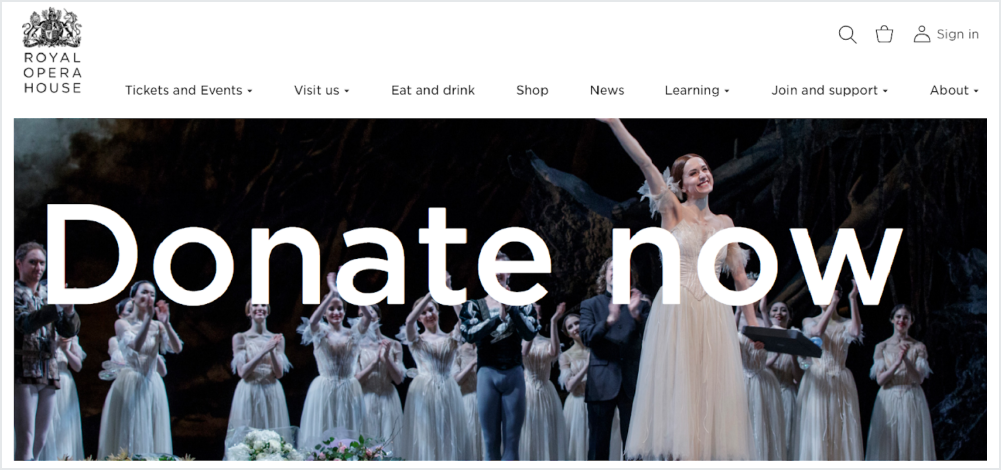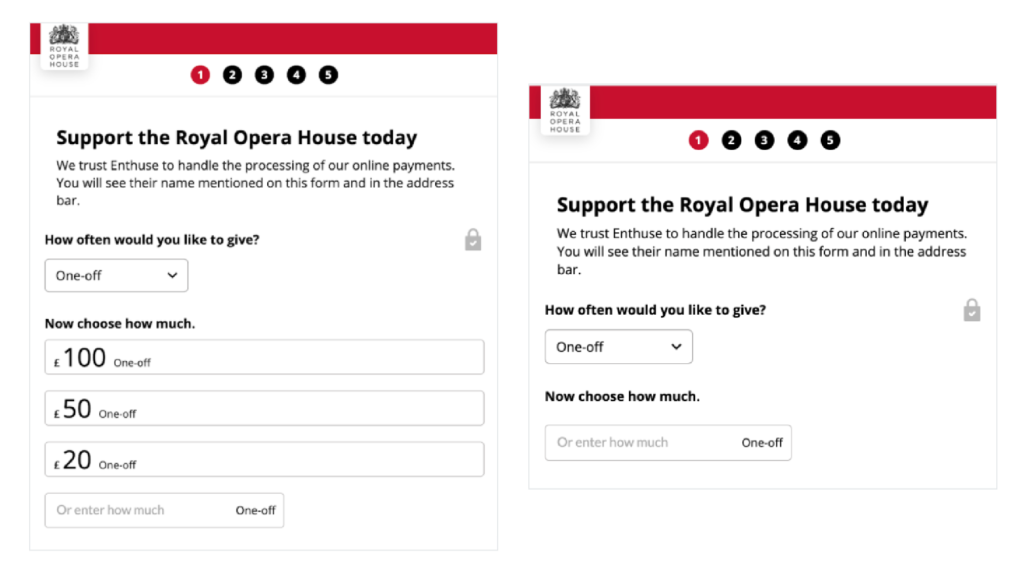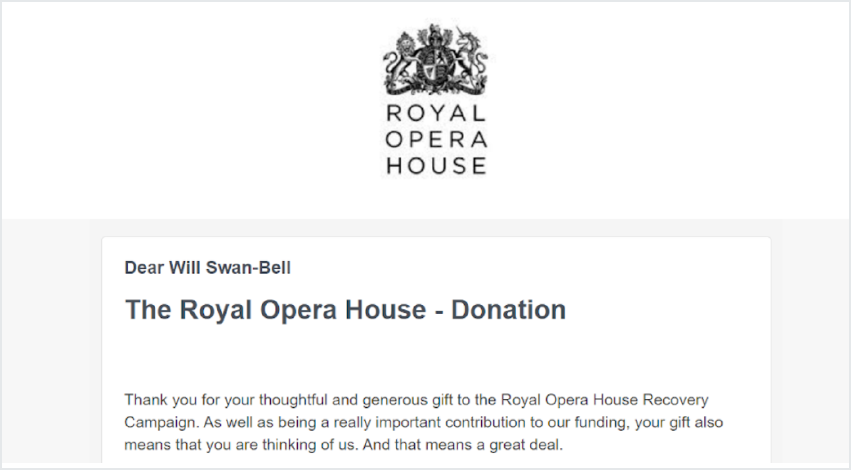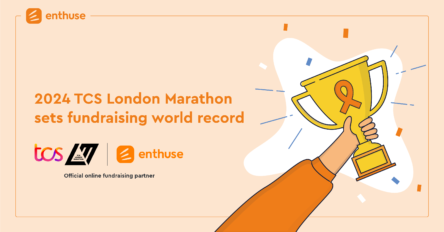
It will come as a shock to no one that the pandemic has accelerated the shift towards digital. Fundraising is no exception, as highlighted in our Spring Donor Pulse Report, which revealed that over half (51%) of the British public prefer to donate online when supporting a charity.
Multiple lockdowns have halted the possibility of cash donations in charity boxes and impacted ticket revenue from live performances. This was something the Royal Opera House understood right at the start of the outbreak and knew it needed to address.
Branded online donations
Just a year ago, digital fundraising had not been a priority for the Royal Opera House. But as the pandemic hit a response was needed, and the charity called on Enthuse to help optimise the donor journey and improve brand recall with Enthuse’s branded online donations.
“We hadn’t put a lot of priority on online giving previously. In response to the pandemic we recognised the need to be more digital. We needed a more user-friendly and robust donations platform.”
Lauren Grubert, Fundraising Manager at Royal Opera House
The Royal Opera House had been using its own online donations solution before switching to Enthuse, for a more robust and user-friendly platform to prepare for increased online donations.
The charity has ramped up its digital efforts since, offering free and pay-per-view live streaming of performances, email outreach, social promotion and even QR codes on the outside of their building. As a result, the Royal Opera House has seen online donations increase since before the pandemic.
Like many charities whose supporters sit across a range of ages, the Royal Opera House was unsure of what to expect from the older part of its demographic when switching to online giving. Yet research from our Donor Pulse Report suggests that up to a third of 55-64 year olds have donated online to charity during Covid. An encouraging finding for charities as they invest in their digital fundraising efforts.
What’s more, the switch to online has not just helped the likes of the Royal Opera House to appeal to people of all ages, but has allowed them to reach new audiences internationally, who otherwise would have been unable to support through ticket sales.
Solutions for better brand recall
Our research shows that a concerning 37% of people couldn’t remember the name of the charity they last donated to via a consumer giving platform. This is an obstacle for charities who are looking to build lasting relationships with donors, but there are solutions.
(Enthuse Spring Donor Pulse Report) 37% of donors who donated through consumer giving platforms couldn’t remember the name of the last charity they gave to.
TweetThose who struggled with brand recall when thinking about their last donation said this was due to the quick pace of the online world, a connection to the cause rather than the specific charity and the logo or colours of the charity not being prominent on third party consumer giving platforms.
The Royal Opera House tackled these issues with striking, joyful live performance imagery on their ‘Donate’ page, that helped to underline their brand. This is particularly important when targeting a worldwide audience online where English may be a donators’ second language. People love the Royal Opera House for the entertainment and escapism it provides and that’s been a key part of what the charity has looked to convey.

Tangible impact statements that demonstrate the lost revenue that closing doors has caused and a summary of where supporters’ donations go help to drive home the importance of the funds raised, too.
This leads neatly into the branding on the donation page that allows supporters’ to stay on the charity’s website rather than having their experience interrupted by abruptly being redirected to a separate donations platform. Furthermore, it helps donors with their brand recall, so they remember the charity they are donating to and where that money is going, making it more likely they will become a repeat giver.
The addition of the ‘message of support’ box has also proved to be a useful addition for the Royal Opera House. By adding a small text box at the bottom of the donation page, donors are encouraged to leave a supportive message at checkout. Not only have these messages been used for members’ magazines, social media and marketing emails – but for boosting morale of staff and performers alike who read the messages.
“The ‘message of support’ box allows supporters to share their memories when they donate which makes the process feel that much more personal. We used those messages as internal motivation for staff at the start of the pandemic.”
Lauren Grubert, Fundraising Manager at Royal Opera House
Optimising donations

Through the Enthuse platform, the Royal Opera House was able to test the optimal layout for their online donations page, pitting pre-loaded donation amounts in descending order versus a blank option where the donor decides the value.
This testing took place in September 2020 ahead of a major fundraising campaign for the charity a month later. Results showed a 2.6% increase in average donation size for the Royal Opera House when no pre-loaded donations options were included. This is something that is different for every charity, so is always worth checking and testing.
“The donations page layout is the perfect example of why you always need to test more than once. You can’t make assumptions about your audience.
Lauren Grubert, Fundraising Manager at Royal Opera House
Brand awareness was then further supported with a customised, branded donor email following the donation, letting supporters know that their transaction had been received, and providing the opportunity to thank the donor to help nurture that relationship.

By making use of Enthuse’s branded online donations solution, the Royal Opera House has been able to maximise its digital fundraising efforts, all while aiding brand recall.
Interested in maximising your digital fundraising efforts? Book a demo today.









